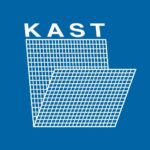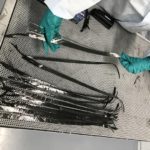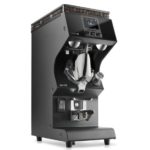Composite tank-containers for transportation of petrochemicals and gases to come into use in 2018
Composite tank-containers for transportation of aggressive substances, petrochemicals and gases by water transport can be but into practice starting from 2018, Andrey Ushakov, Director of Composite Materials Center at Skolkovo Institute of Science and Technology (Skoltech), told IAA PortNews at the briefing held by Russian Maritime Register of Shipping (RS).
According to Ushakov, this period is determined by the comprehensiveness of the task.
“We are involved in a comprehensive project. The development of such a product should comply with international standards, norms and regulations and it is very important to have Russian Maritime Register of Shipping as a participant of the project implementation,” he said.
Andrey Ushakov explained that the international regulations which are essential for multimodal shipping do not cover the use of composite materials. It is steel that can only be used for such products, which makes the task even more challenging.
Aleksandr Fetisov, Head of Container Department of Russian Maritime Register of Shipping told in his turn that “containers of composite materials are an absolutely new area where the Register is involved in deep collaboration with the representatives of Uralcryomash, Spectransgarant and Composite Materials Center at Skolkovo Institute of Science and Technology.”
“It is an innovative project as 100% of containers being used for multimodal transportation today are made of steel,” Fetisov explained.
According to RS representative, “the creation of a new tank-container with a boiler of composite materials unparalleled anywhere in the world is a perspective and much expected project at the container market”.
“The product is ready and it will be demonstrated at TRANSRUSSUA exhibition on April 21-24, 2015. The composite vessel has successfully passed the tests and now it is to undergo operational tests as a part of a container”, Andrey Ushakov said.
According to Skoltech representative, “this product will be generally manufactured of domestic materials”.
The production will be arranged by JSC Uralcryomash.
Oleg Cheremnykh, Principal Designer, Uralcryomash, said: “At designing of new tank containers, Uralcryomash solves the tasks focused on the efficiency improvement of transportation of chemically aggressive substances, including the maintenance of product quality in the tank container during its filling, transportation and discharge; use of versatility or individuality of structural solutions for transported products similar in thermo-physical and chemical properties (oxygen-nitrogen-argon; LNG-methane; hydrogen; helium); increase of carrying capacity, ensuring high safety and security level.”
The development of a tank container of composite materials is an innovative project being implemented as part of the state programme ‘Developing the Composite Materials Production Industry’. On the basis of latest scientific and technical achievements it is planned to design and manufacture a container of polymer composites which would be resistant to aggressive substances, chemical and petrochemical products used for container shipments and would comply with international standards for combined transport. Among the intended advantages of the new tank containers is the mass reduction by 20 per cent at least as compared to similar steel containers as well as performance characteristics retention when carrying aggressive substances, chemical and petrochemical products during 15 years at least depending on the type of cargo carried.
On 17-18 March a conference ‘Containers and container transportation of petrochemicals and gases. Problems, solutions, perspectives’ was held in St. Petersburg, Russia. The conference was arranged by Russian Maritime Register of Shipping.












